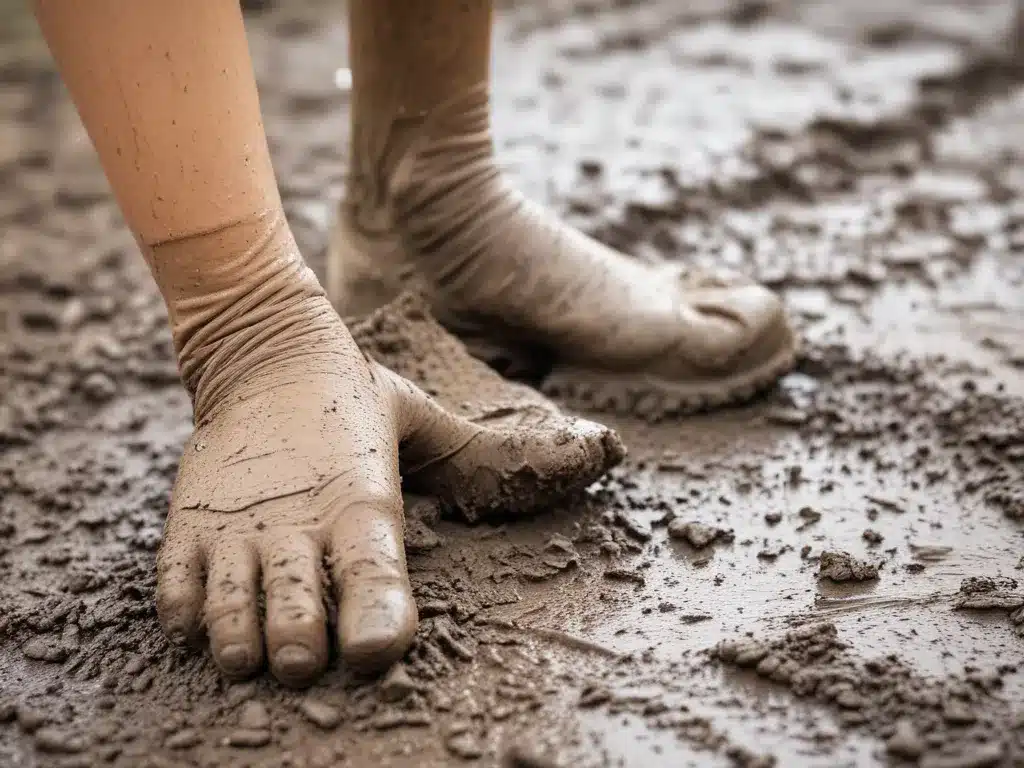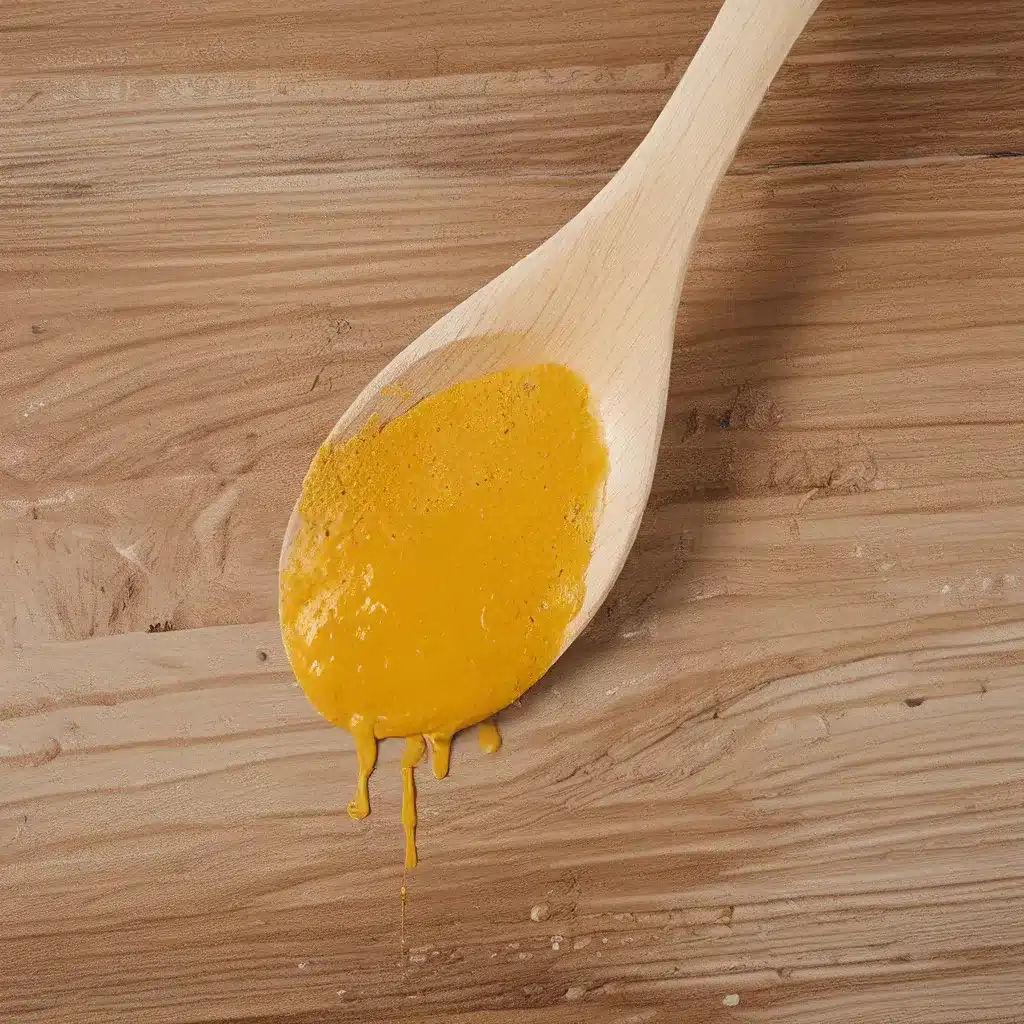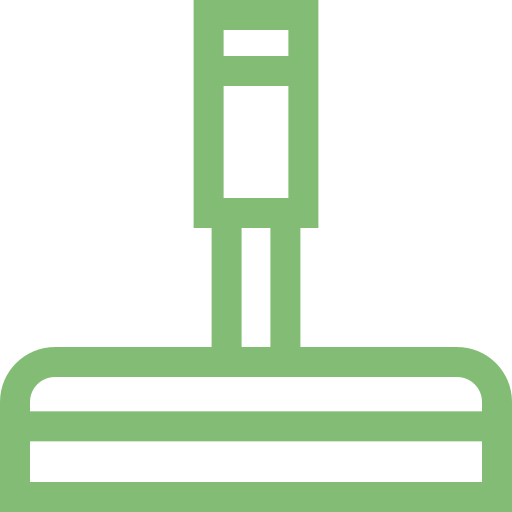The Challenges of Mud Removal
Mud is a persistent and stubborn foe when it comes to cleaning. Its tenacious grip on surfaces can make it a frustrating and time-consuming task to remove. As a homeowner or business owner, I’ve had my fair share of experiences dealing with the aftermath of mud-related messes. From muddy footprints tracked in from the outdoors to the messy splatter of a rainstorm, mud can quickly transform a pristine environment into a chaotic one.
The challenges of mud removal are multi-faceted. Its ability to seep into cracks and crevices, staining and discoloring surfaces, can make it seem like an uphill battle. Additionally, the sheer volume of mud that can accumulate can be overwhelming, leaving me feeling discouraged and unsure of where to even begin.
Fortunately, I’ve discovered a variety of effective mud removal hacks that have helped me tackle these challenges head-on. In this comprehensive guide, I’ll share my personal experiences and insights to help you navigate the world of mud cleanup with confidence and efficiency.
Understanding the Nature of Mud
To effectively remove mud, it’s crucial to understand its fundamental nature. Mud is a unique and complex substance, formed by the combination of water, soil, and other organic matter. The specific composition of mud can vary depending on the location, weather conditions, and the type of soil present.
The composition of mud plays a significant role in determining the most effective cleaning methods. For instance, mud with a higher clay content may require different techniques than mud with a more sandy or organic composition. By understanding these nuances, I can tailor my approach to the specific type of mud I’m dealing with, ensuring a more efficient and successful cleanup.
Moreover, the way mud behaves on different surfaces is another critical factor to consider. Mud on hard, non-porous surfaces like tile or concrete may respond better to certain cleaning methods, while mud on porous surfaces like wood or fabric may require a more delicate touch.
Preparing the Workspace
Before diving into the actual mud removal process, it’s essential to properly prepare the workspace. This step can make a significant difference in the overall efficiency and effectiveness of the cleanup.
One of the first things I do is assess the extent of the mud-related mess. I take a few moments to survey the affected area, noting the size, location, and severity of the mud stains. This information helps me determine the necessary cleaning supplies and equipment, as well as the best approach to tackle the problem.
Next, I ensure that the workspace is clear of any obstacles or items that could hinder the cleaning process. This may involve moving furniture, clearing walkways, or creating a designated cleaning area. By creating a clean, uncluttered workspace, I can focus on the task at hand without any distractions or interruptions.
Lastly, I gather all the necessary cleaning supplies and tools. This may include items such as buckets, mops, scrub brushes, rags, and a variety of cleaning solutions. Having everything within easy reach allows me to work efficiently and minimize the time spent searching for the right tools.
Wet Removal Techniques
When it comes to mud removal, one of the most effective approaches is the use of wet removal techniques. These methods leverage the power of water and various cleaning agents to break down and dislodge the mud from surfaces.
One of the go-to wet removal techniques I often employ is the power wash. By using a high-pressure water stream, I can effectively blast away mud from hard surfaces like concrete, stone, or siding. The power of the water pressure helps to lift and flush away even the most stubborn mud deposits.
Another wet removal technique I find particularly useful is the use of a wet vacuum. This tool not only sucks up the mud and water but also helps to extract any remaining moisture, leaving the surface dry and clean. The wet vacuum is especially helpful for dealing with mud on carpets, upholstery, or other porous materials.
In addition to these mechanical methods, I also rely on various cleaning solutions to enhance the effectiveness of wet removal. Mild detergents, acidic cleaners, or enzymatic solutions can help break down the organic compounds in the mud, making it easier to rinse away.
Dry Removal Techniques
While wet removal techniques are highly effective, there are situations where dry removal methods may be more appropriate. This is particularly true for delicate surfaces or when dealing with drier, more powdery forms of mud.
One of the most common dry removal techniques I use is sweeping or brushing. By gently sweeping or brushing the affected area, I can lift and dislodge the dry mud, allowing me to then easily vacuum or wipe it away. This approach is particularly useful for floors, patios, or other hard surfaces.
Another dry removal technique I find effective is the use of absorbent materials. By applying a layer of absorbent materials, such as kitty litter or baking soda, onto the mud-affected area, I can allow the mud to be drawn up and trapped. Once the absorbent material has done its job, I can simply sweep or vacuum it away, taking the mud with it.
In some cases, I may also employ a combination of wet and dry removal techniques. For instance, I might first use a dry brushing or sweeping method to loosen the mud, followed by a wet cleaning solution to thoroughly remove any remaining residue.
Tackling Tougher Mud Stains
While the wet and dry removal techniques mentioned earlier are often effective, there are instances where the mud has become deeply ingrained or particularly stubborn. In these cases, I need to employ more specialized methods to tackle the problem.
One technique I’ve found to be highly effective is the use of chemical-based cleaners. These specialized products, formulated with powerful solvents or degreasing agents, can help to break down the molecular bonds that hold the mud in place. By applying these cleaners and allowing them to work, I can then use scrubbing or rinsing to lift away even the most persistent mud stains.
Another tactic I’ve utilized is the application of heat. By applying heat to the affected area, I can help to soften and loosen the mud, making it easier to remove. This can be done with a steam cleaner, a heat gun, or even a hair dryer in some instances.
In cases where the mud has penetrated deep into porous surfaces, such as concrete or brick, I may need to resort to more intensive methods. This might involve the use of specialized tools like pressure washers or sandblasting equipment to remove the embedded mud, followed by a thorough cleaning and sealing of the surface.
Maintaining Cleanliness After Mud Removal
Achieving a successful mud removal is only half the battle. To ensure that the cleaned surfaces remain pristine and free of future mud-related messes, it’s crucial to implement proper maintenance strategies.
One of the key aspects of maintaining cleanliness is to address the root cause of the mud problem. This might involve improving drainage, installing mats or rugs at entryways, or implementing other preventative measures to minimize the amount of mud that gets tracked into the space.
Additionally, I make a conscious effort to regularly inspect and clean the affected areas. This could involve routine sweeping, mopping, or even periodic deep cleaning to address any lingering mud residue. By staying on top of the maintenance, I can prevent the buildup of mud and ensure that my hard work in the initial removal process doesn’t go to waste.
In some cases, I may also need to consider the long-term protection of surfaces. This could involve the application of sealants, coatings, or other protective measures to create a barrier against future mud intrusion. By taking these proactive steps, I can enjoy a cleaner, more resilient environment that stands up to the ongoing challenges of mud-related messes.
Conclusion
Mud removal can be a daunting task, but with the right knowledge and the proper techniques, it doesn’t have to be a source of constant frustration. By understanding the nature of mud, preparing the workspace effectively, and utilizing a combination of wet and dry removal methods, I’ve been able to tackle even the most stubborn mud-related messes.
Moreover, by addressing the root causes and implementing effective maintenance strategies, I can ensure that my hard work in removing the mud pays off in the long run. A clean, mud-free environment not only looks and feels better but can also contribute to a healthier, more enjoyable living or working space.
If you’re struggling with persistent mud problems, I encourage you to explore the range of cleaning services available to help you regain control and maintain a spotless, mud-free space. With the right tools and techniques, you too can conquer the challenges of mud removal and enjoy the benefits of a clean, well-maintained environment.







